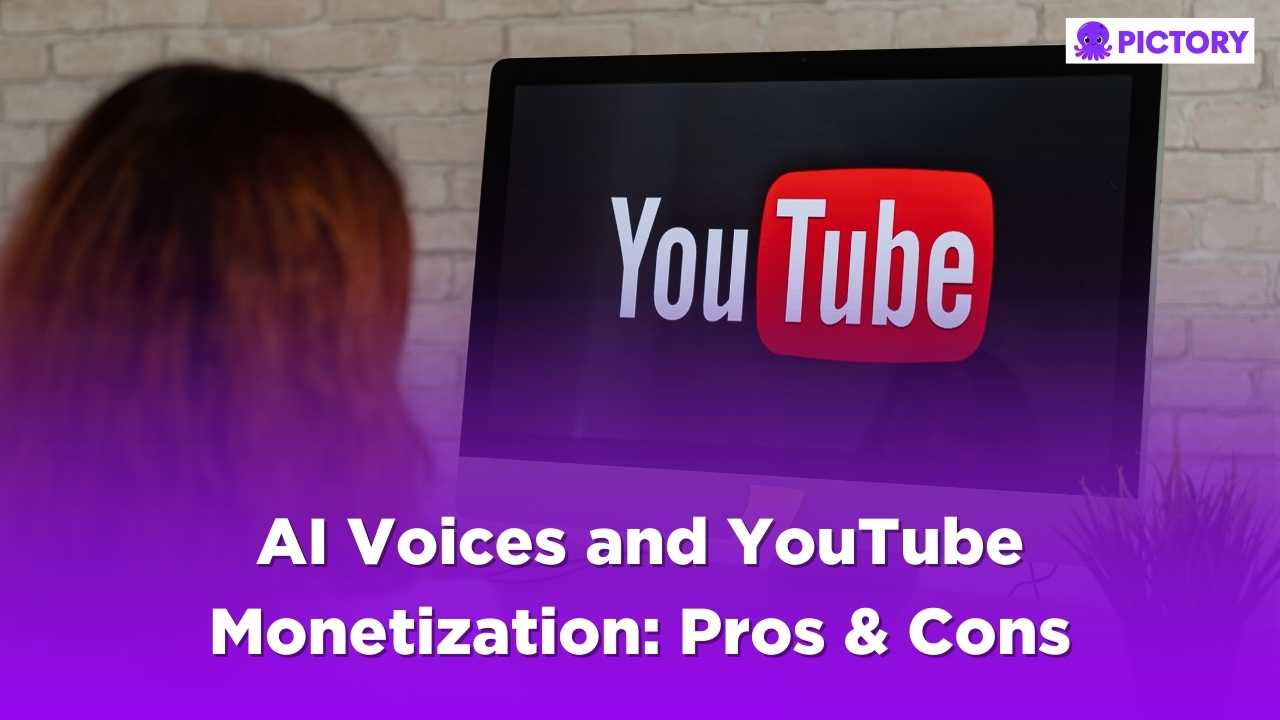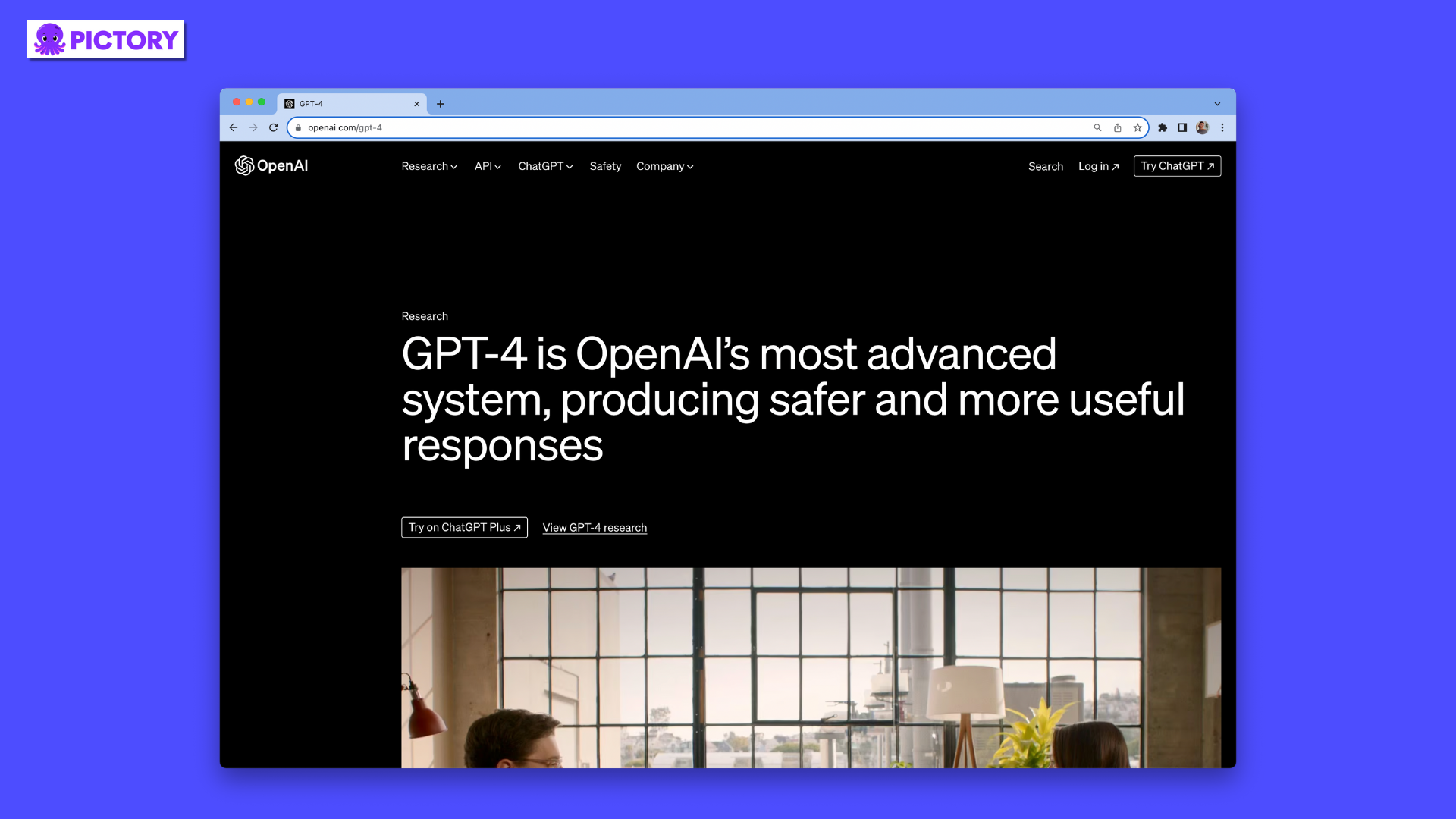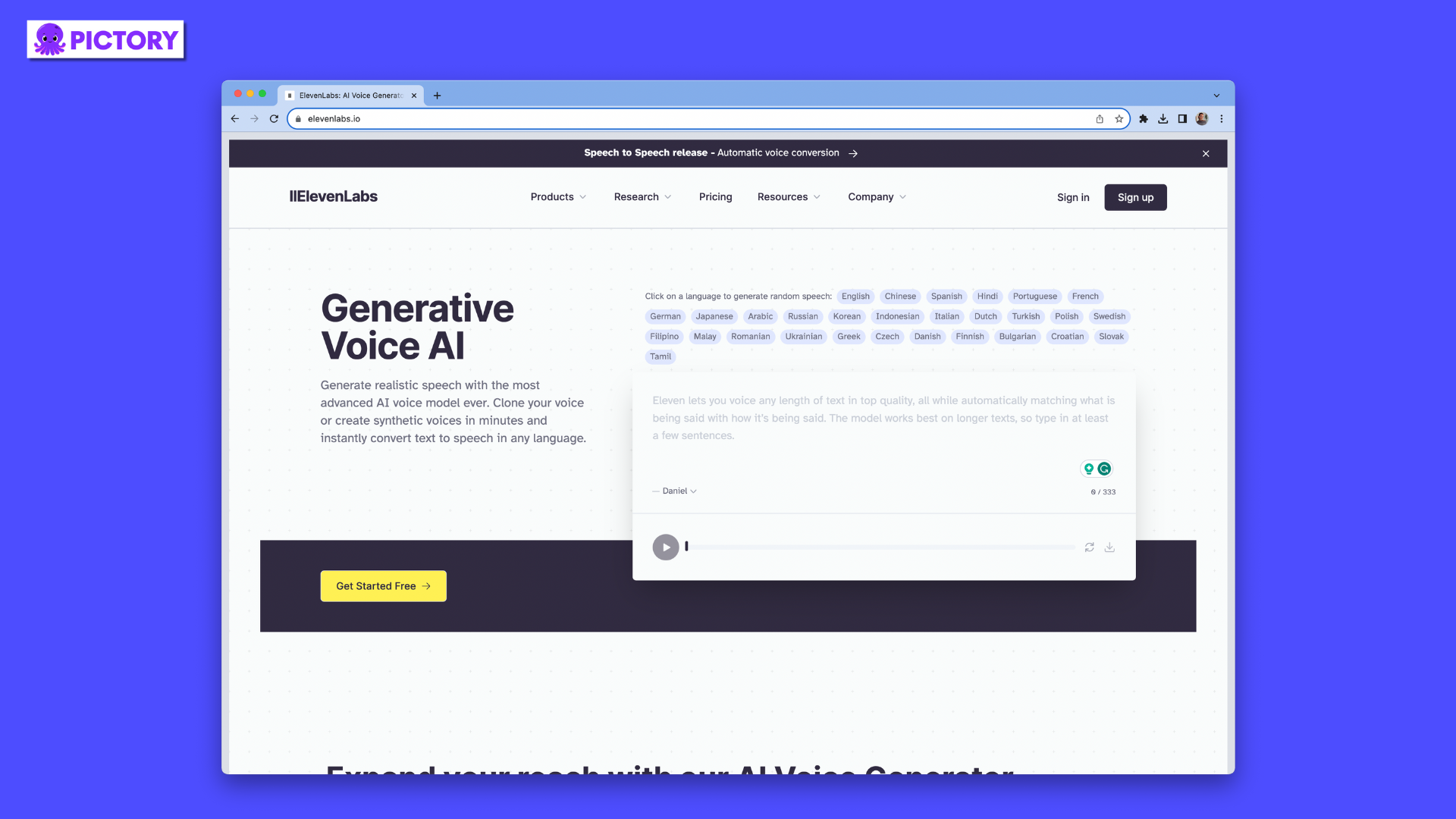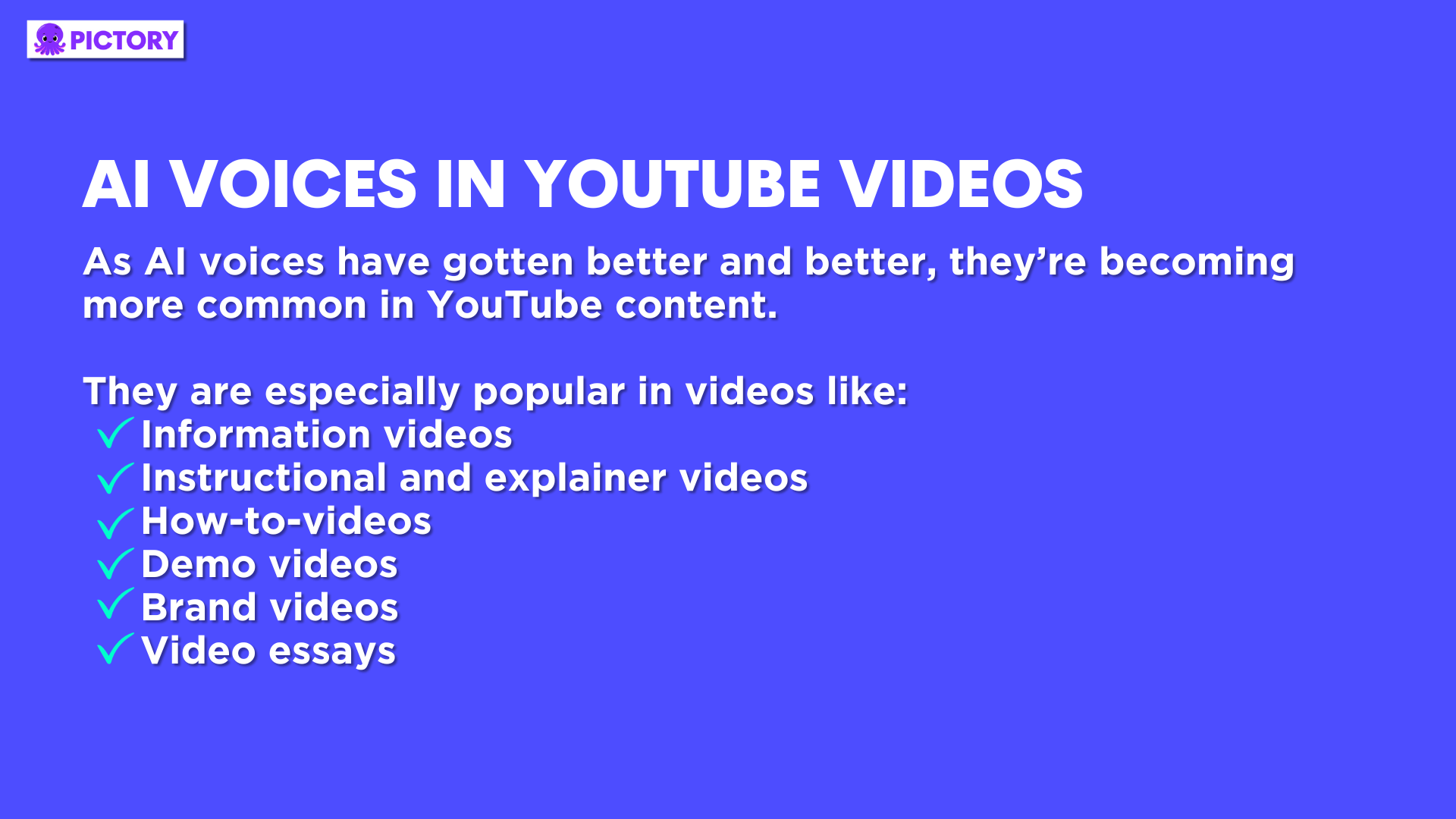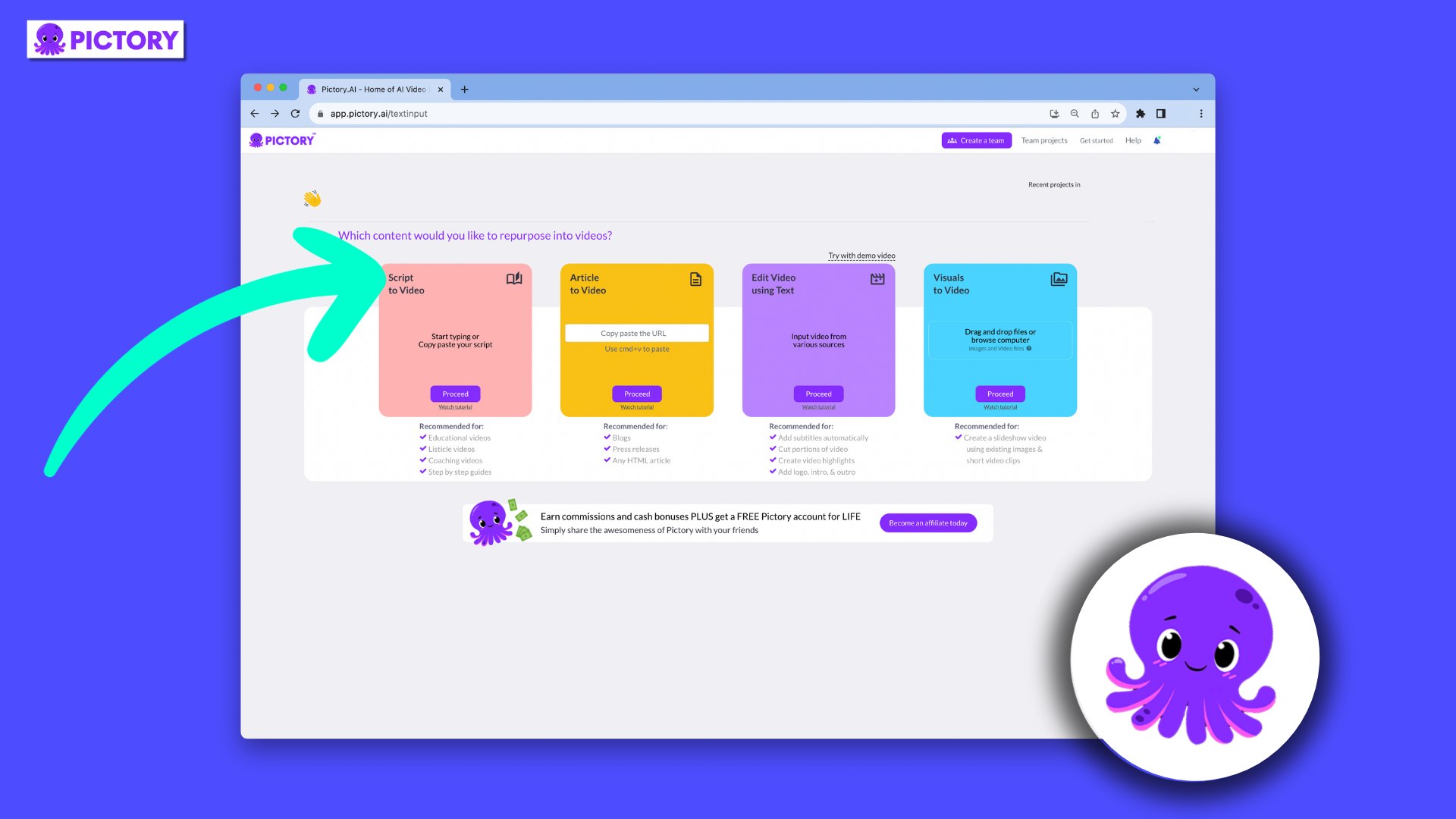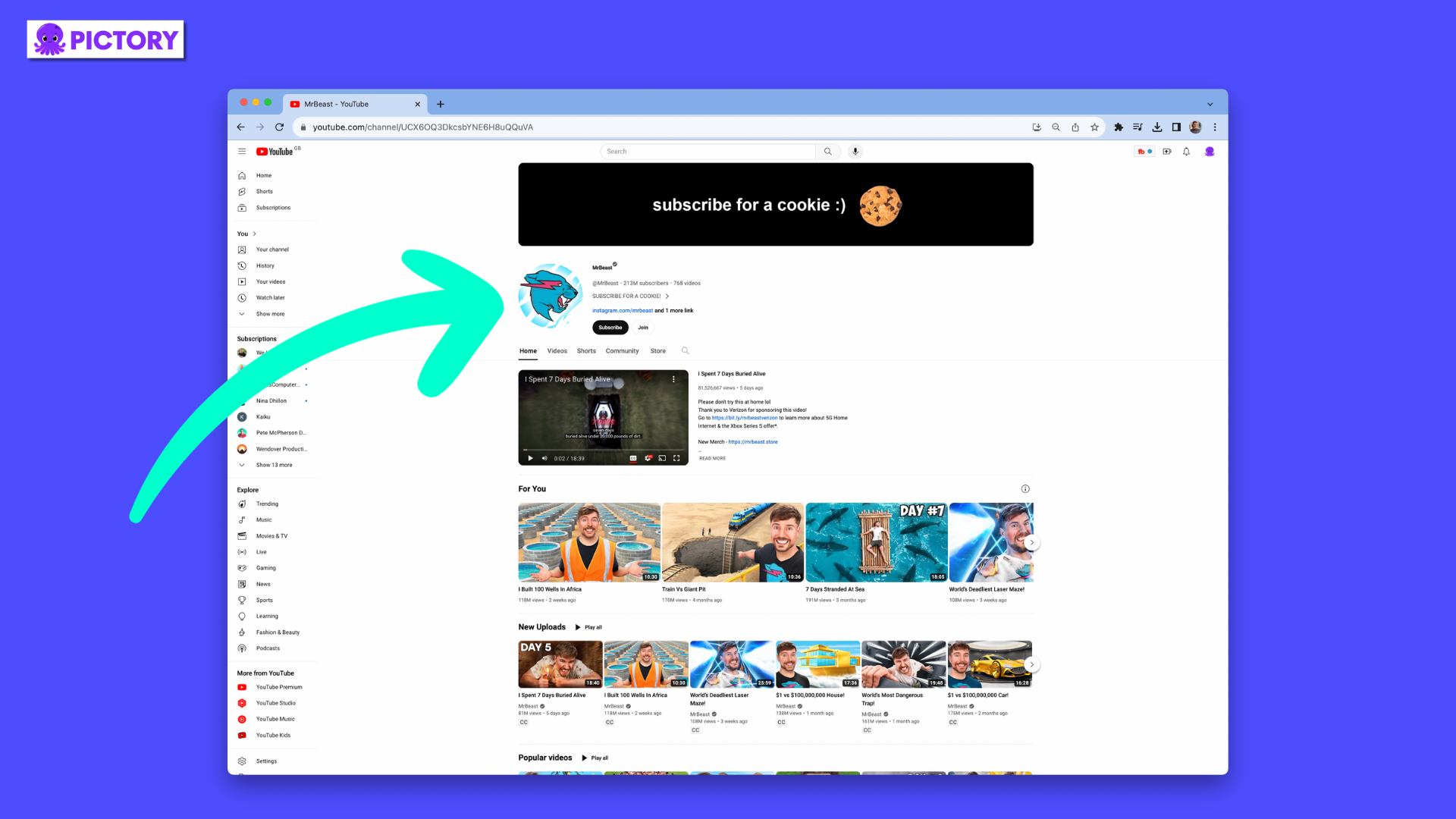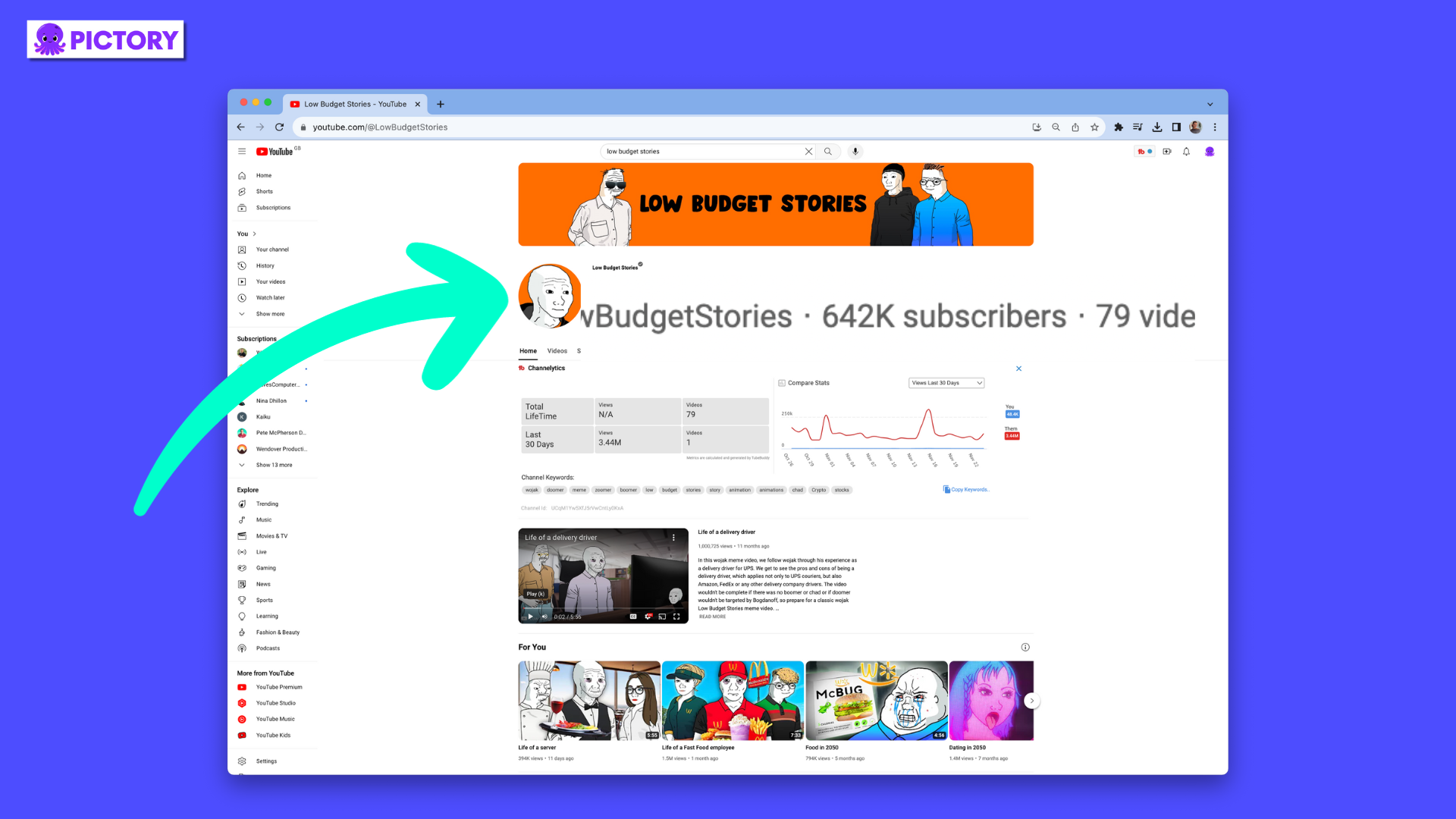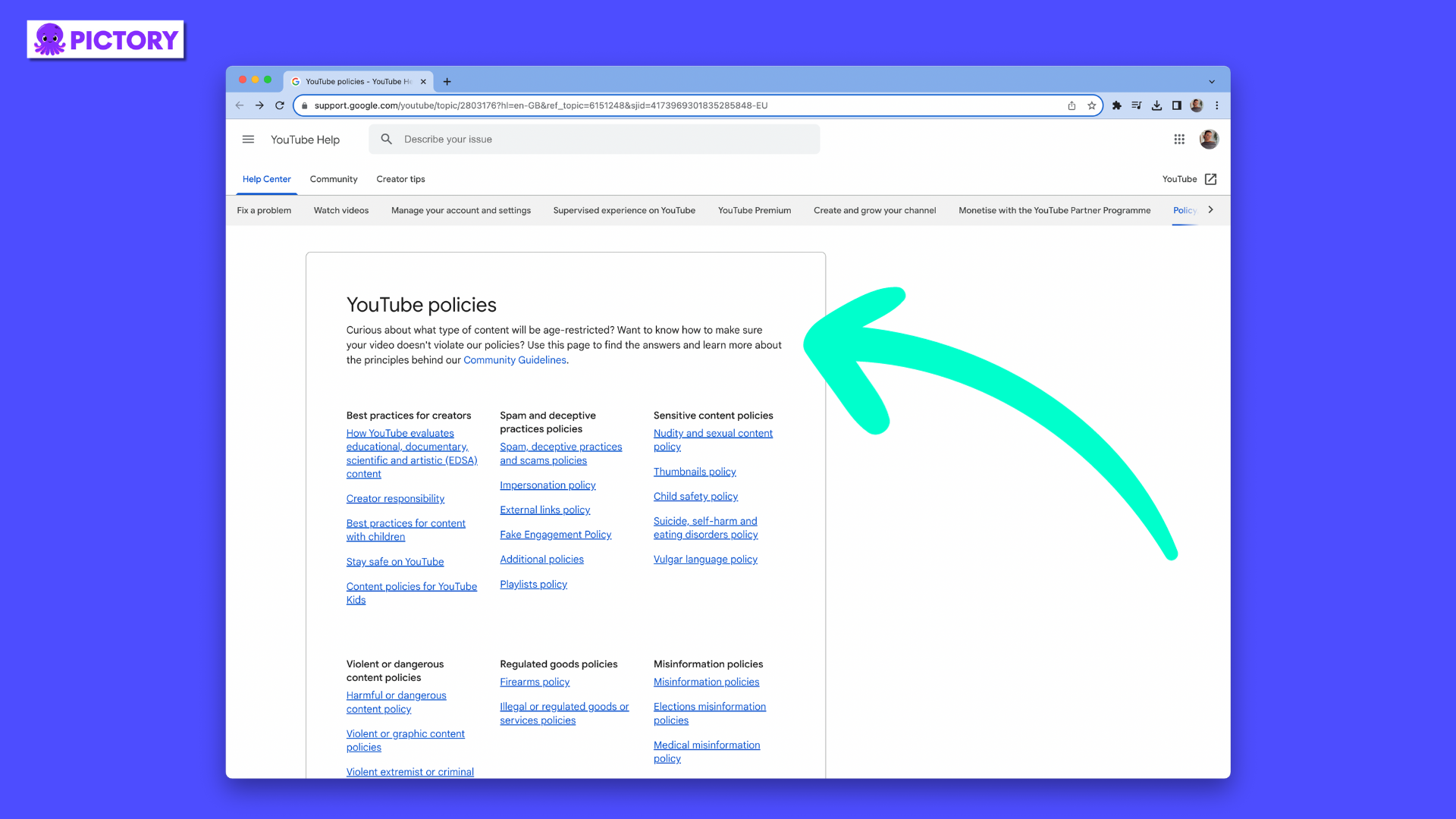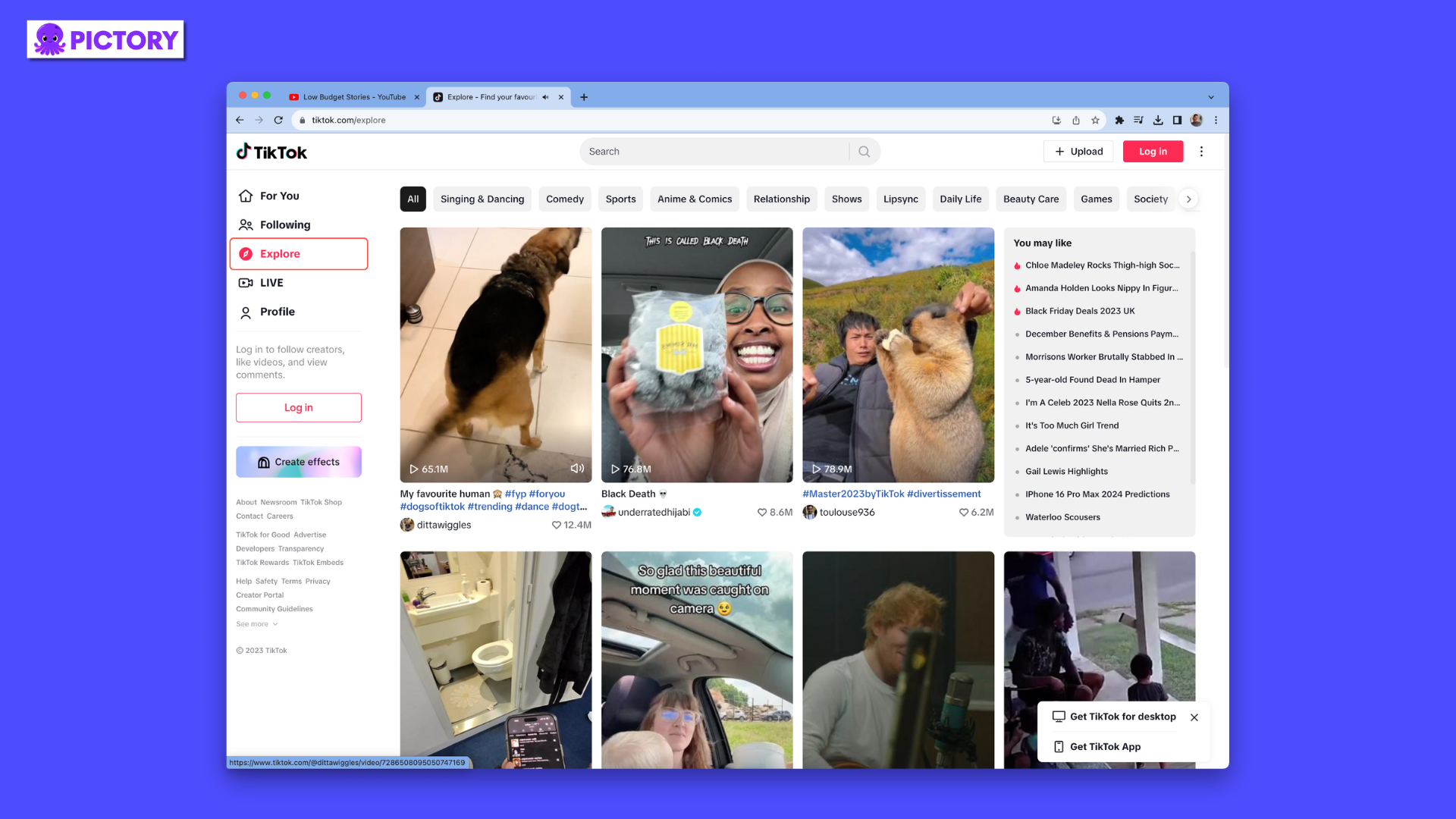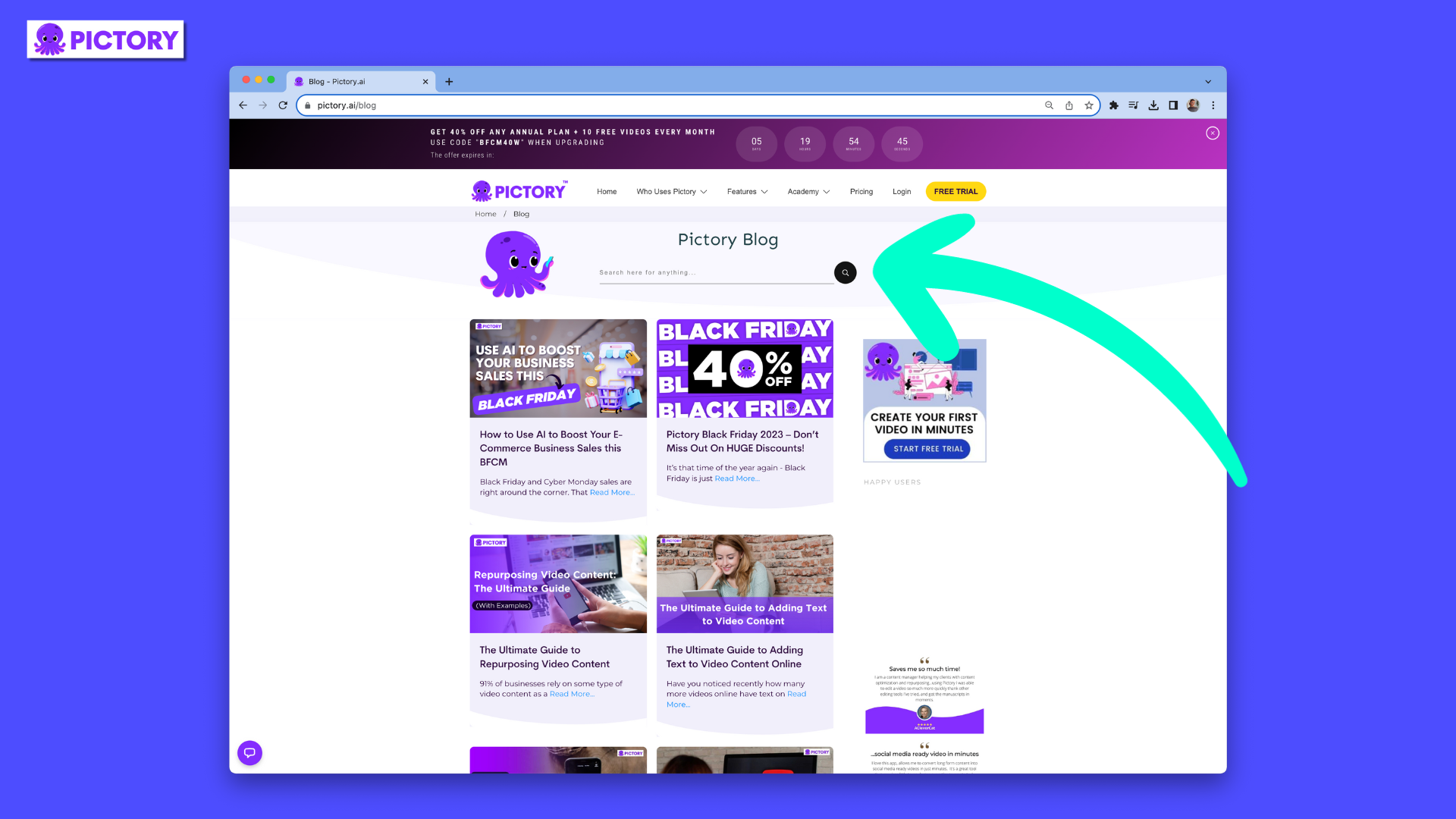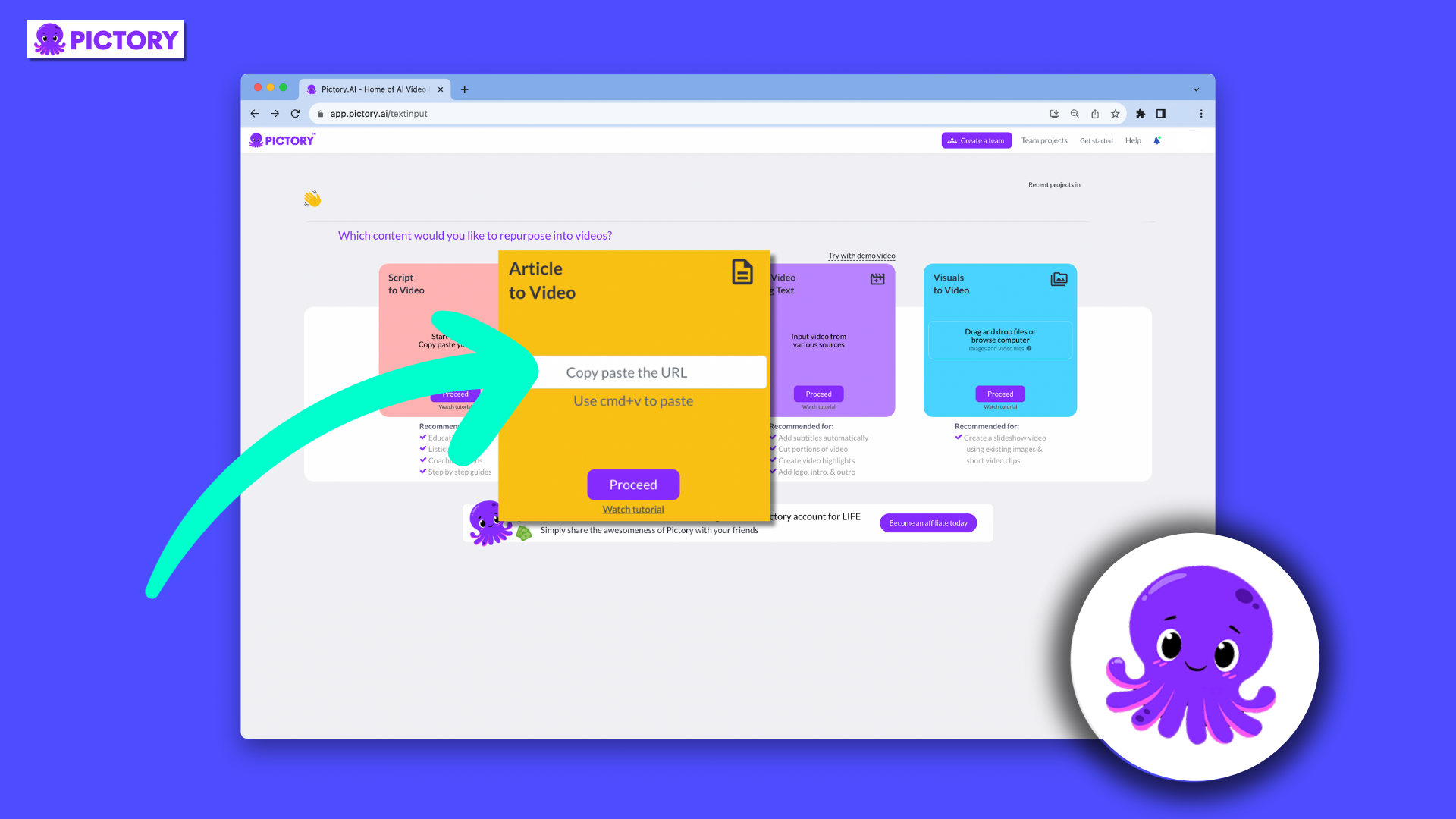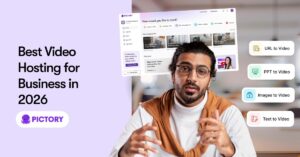AI Voices and YouTube Monetization: Pros, Cons, and Things to Be Aware Of
Do you want to create a successful YouTube channel?
According to reports, 75% of kids say they want to become YouTubers and we can’t blame them.
But, most creators plow a lot of work into their channels before the algorithmic rewards kick in.
Having to appear on camera is another challenge.
AI voices can help solve both of these problems.
However, if you don’t adhere to YouTube’s guidelines, your content could get demonetized faster than you can say “Adsense.”
Luckily for you, it’s easy to use AI technology within our YouTube content, and still gain financial benefit.
TL;DR
-
AI voices are an emerging tool for content creation, offering realistic, computer-generated narration that still allow you to monetize YouTube videos on your channel.
-
Using AI-generated voices saves time, reduces entry barriers, and accelerates monetization. Ideal for various video formats like instructional, explainer, and informational content.
-
AI voices comply with YouTube’s monetization policies, provided content is original and adds value.
-
AI tools like Pictory can effectively convert existing content (like blog posts) into engaging videos. From there, you can easily add realistic AI voices to your video projects with our ElevenLabs integration.
The Emergence of AI Voices in Content Creation
AI has been making waves recently, from ChatGPT throwing universities into pandemonium to rising concerns about deep fakes.
But for YouTube creators, AI has been making life a lot easier.
Editing tasks that used to take creators hours, AI tools can now do in a matter of minutes.
AI voices are one of these tools.
What are AI Voices?
AI voices are also known as computer-generated or synthetic voices.
They are artificially created using synth technology that leverages complex algorithms.
These algorithms analyze human speech, pronunciation, and intonation.
Most AI voices work via text-to-speech technology.
This capability isn’t all that new, but it’s getting progressively more powerful.
Instead of only being able to produce robot talk, AI voices can now copy human speech with amazingly high levels of accuracy.
There are also a few highly developed apps, such as AI voice generator ElevenLabs, that have hyper-realistic voices in their roster.
These can be integrated into most video editing software, to streamline the video-making process.
AI Voices in YouTube Videos
Text-to-speech has been around for a while, but the last few years are when it started to emerge in content creation.
One of the reasons for this is TikTok’s auto-narration feature, which then flowed over into YouTube Shorts.
As AI voices have gotten better and better, they’re becoming more common in YouTube content.
It’s especially popular in formats like:
-
Information videos
-
How-to-videos
-
Demo videos
-
Brand videos
-
Video essays
Text-to-speech can work for just about any video that isn’t dependent on the personality of the creator.
For instance, you might be limited if you’re creating vlogs for YouTube.
But, even for vlog-style videos, AI voices can be a valuable tool.
Some lifestyle creators prefer to film their content and then add narration in post-production.
If you don’t enjoy the sound of your own voice, an AI voice tool could be the perfect way to add audio.
Benefits of Using AI Voices
Right now, AI tools are poised to revolutionize video creation.
Time savings is one of the biggest benefits of AI voices and tools.
Instead of having to narrate voice-over takes, you can use a text-to-speech tool to create polished video audio in a fraction of the time.
Are you looking to save time on filming and editing as well?
You can even use a script-to-video tool like Pictory to create professional videos (including narration) from text.
Besides saving time, AI voices are also highly cost-efficient.
Using an AI voice is far cheaper than hiring a voice actor.
It can also save you on pre- and post-production costs.
Imagine you need to make some last-minute changes to your video narration.
If you’ve hired a freelance voice actor, they’ll have to re-record the entire segment.
If you narrate your own videos, you’ll most likely need to invest in audio equipment and create a dedicated recording space.
If you only have a limited amount of time and money to dedicate to your channel, but you’re determined to get it monetized—AI tools are the answer.
AI voices can also be a game-changer for creators who feel they don’t have the right voice or accent to convey their message, or who struggle with a language barrier.
With AI voices and translation tools, it’s relatively simple to record the same video in more than one language.
To make matters even more exciting, YouTube has recently launched a multi-track language feature.
Publishing your videos in multiple languages isn’t just inclusive, it’s also great for reach and revenue.
YouTube’s new multi-language feature now allows creators to upload multiple audio tracks to videos.
This means you can include dubbed audio in all your videos, without having to upload a different video for each dub.
This is big news for creators.
Instead of having multiple versions of the same video in a different language—or even multiple channels for each language you translate your videos into—you can consolidate everything and viewers can easily select their chosen language.
Mr. Beast is already capitalizing on the new feature, which we’d rate as a smart move, given that 15% of watch time on YouTube comes from videos that are being watched in viewers’ non-primary language.
So where does AI voice tie into all this?
Well, narrating your videos in multiple languages can get expensive fast, unless you’re a wizz on the mic and happen to be fluent in a bunch of languages.
With a translation and AI voice tool, you can quickly and easily translate all your videos on your channel and expand your reach.
Examples of Popular YouTube Channels
Feeling skeptical about the effectiveness of AI voices for YouTube?
If you watch a lot of YouTube, you’ve probably come across a few low-effort, spammy text-to-speech videos.
These are not a true representation of what’s possible with AI voice.
If you put thought into your content, you can create successful videos that increase engagement.
Low Budget Stories is a good example of this.
Even though the creator uses AI voices and very basic graphics, the channel has attracted more than 624K subscribers.
The secret lies in the video ideas.
They often center around current topics that are in the zeitgeist (such as “Living with Chat-GPT“) and feature a unique blend of storytelling, animation, and dark humor.
Besides attracting a healthy amount of subscribers, Low Budget Stories has even been copied by other channels, such as “Zero Budget Stories.”
This channel posts the same types of videos, using similar graphics and AI voices.
The most interesting part? Both channels have high engagement rates on their videos, which consistently rake in over 200K worth of views.
Another example of a large and successful YouTube channel that leverages AI voices is edureka!
This channel specializes in tutorials and training videos for things like AI, big data, data science, web development, cloud computing, etc.
It currently has over 3.8 million subscribers and receives consistent views on its videos.
YouTube’s Monetization Policies
To be eligible for monetization, channels need to have 1,000 subscribers and 4,000 hours of watch time before they can join the YouTube partner program.
Besides this, creators also need to stick to YouTube’s content guidelines.
These prohibit content that contains:
-
Hate speech
-
Sexually explicit material
-
Violence
YouTube also has policies on duplicate content, plagiarism, and content quality.
Do AI voices make the quality cut in YouTube’s eyes? Yes, they do.
Contrary to popular opinion, AI voices and YouTube monetization are not mutually exclusive.
However, YouTube does not like what it calls auto-generated content.
This is where things can get a little confusing because most AI voice tools auto-generate speech from text.
Let’s compare two examples, Channel A and Channel B, to get an idea of what YouTube means by auto-generated content.
Channel A uses multiple automation tools to scrape the internet for trending news stories.
It then converts these into a “video” format using text-to-speech.
However, there are no informational graphics, and the video contains little-to-no editing.
Instead, it’s just words against a picture from the news article.
YouTube would most likely consider this auto-generated content.
It doesn’t add any extra value to the news article.
Instead, it’s just turning text into audio, with zero personalized input from the creator.
Channels like these usually get flagged by the algorithm and their videos demonetized (if they even made it into the partner program to begin with).
Channel B, on the other hand, creates informational videos on self-improvement topics.
The creator researches the information thoroughly, creates a unique script, and uses images and visuals to help illustrate the concepts covered in the video.
They then use an AI narrator for their content instead of recording a voiceover themselves.
A channel like this is unlikely to get flagged by the algorithm.
Monetizing YouTube Channel Content With AI Voices
One of the things that discourages YouTube creators from leveraging AI is the fear of getting penalized by the algorithm.
A lot of people assume that AI-generated content is frowned upon by Google and YouTube.
But, this is not the case.
Since the launch of ChatGPT, Google released a statement saying that AI-generated content is not against its search guidelines, as long as it provides value.
YouTube seems to have a similar take on videos that are produced with the help of AI technology.
Earning Potential With AI Voices
Using AI voices in your videos won’t get you demonetized by YouTube.
In fact, AI voices and YouTube monetization can actually work together to supercharge your channel into a revenue-generating machine.
Here are a few ways that AI voices can boost your channel’s earning potential.
Firstly, AI-driven text-to-speech tools can streamline your content creation process.
This can allow you to create more videos in less time, and help you stick to a consistent upload schedule.
AI voices can also allow you to achieve a more professional and polished sound.
This can boost the overall quality of your videos and increase engagement.
As we said above, using AI voices can also save you the money you might have had to spend on hiring voice actors and buying recording equipment.
This leaves you with more resources to put towards producing a high volume of videos.
Uploading consistently is key.
The more you upload, the more content you will have to place ads on, and the more views you are likely to attract.
Of course, don’t forget that all of these benefits are quality-dependent.
Producing hundreds of low-quality videos won’t do much for your channel.
But if you’re consistently uploading engaging videos, you’re almost guaranteed a taste of YouTube success.
Challenges and Ethical Considerations
One of the biggest factors to keep in mind around AI technology is content originality.
As we outlined earlier, YouTube takes a strict stance on plagiarism.
If the content isn’t original and incorporates text-to-voice, this is where YouTubers are most likely to run into trouble.
YouTube does allow creators to repurpose another person’s work to a certain degree, as long as they provide additional value.
This falls under the fair use law.
For instance, some creators specialize in commentary-style or reaction videos.
This is one format where text-to-speech tools might not be ideal.
Reaction videos often walk a fine line around fair use.
How much of your own unique content must you incorporate to avoid getting dinged by the algorithm?
Nobody knows for sure.
However, if you show your face and record yourself reacting to other videos, articles, or social posts, there’s a far lower chance of getting penalized.
That’s not to say you can’t use AI voice in conjunction with fair use at all.
But, you will have to make sure your videos don’t rely too heavily on other people’s work.
For example, taking copyrighted books and converting them into audiobook format with AI voices is more than likely going to get you dinged for plagiarism.
Social Media and Fair Use
Fortunately, most YouTubers aren’t pushing for patents and gatekeeping their content.
Most lean into the spirit of the creator economy and are happy to have other creators repurpose clips for things like reaction videos.
TikTok is a prime example of this.
A lot of people who go viral on TikTok do so by following trends, reacting to other videos, and stitching.
Stitching directly allows creators to incorporate a part of another user’s video into their own.
AI and Fair Use
At the moment, there’s also a gray area around the copyrighting of content created with AI technology.
Recently, the U.S. Patent and Trademark Office (USPTO) moved to revoke copyright protection for an AI-generated comic.
The motivation was that copyrightable works need to have been authored by humans.
But, if you’ve ever used AI tools for content creation, it’s easy to see the potential problems with this theory, especially moving forward into a future dominated by AI technology.
Just because a piece of content is created with the help of AI doesn’t mean it has no creative value.
Ethical Concerns
One of the great things about video is it can trigger more trust than text.
Being able to see and hear you speak makes viewers feel like they know you.
A major ethical concern around AI is that human-like voices can create a false sense of trust.
For instance, scammers are already using AI to create voice clones to swindle people out of money over the phone.
Fortunately, concerns like these don’t apply to the average YouTube channel.
As long as you’re not trying to spread fake news, or inspire falsely placed trust, there is nothing unethical about using an AI voice to help you in your content creation.
Transforming Your Own Content With AI Tools
If your videos consist mainly of a robotic voice reading out text from around the web—there’s a chance that the algorithm might flag your content as violating YouTube guidelines.
But what if it’s your own content?
What if you have a blog and you want to turn some of your posts into videos?
This is a perfect use of AI-powered text-to-speech tools.
If the content is already yours, there’s nothing stopping you from repurposing it in any way you want.
Turning blog posts into videos is a great way to maximize your content, increase engagement, make your blog pop, and drive more revenue.
Of course, to make sure your videos meet YouTube’s community guidelines, alongside their markers for content and quality, you’ll also need to pair the audio with some great visuals.
With Pictory, you can do this in just a few clicks.
Our blog post-to-video feature allows you to create a compelling YouTube video from text in a matter of minutes.
You get to draw from a library of over 3 million video clips and images and 15K worth of music tracks.
You also have the option to either narrate in your own voice, upload existing audio files, or let our AI voice feature do the talking.
AI Voices and YouTube Monetization: A Dream Team
Contrary to what many people think, AI voices and YouTube monetization aren’t mutually exclusive.
Using AI voices in your YouTube videos can increase the chances of your videos getting demonetized.
But only if you’re producing poor-quality content that’s abusing the law of fair use, infringing on copyright, or impersonating someone else’s work.
And let’s be honest, this kind of content isn’t going to bring in the big bucks on YouTube, no matter what method you use to narrate your videos.
AI voices allow YouTubers to streamline their content creation process and save time and money.
They can also make your videos feel more polished, and allow you to create a higher volume of videos and achieve better upload consistency.
Are you looking to leverage the power of AI to create videos? You’ve arrived at the right spot.
Pictory offers a range of AI-driven tools tailored for YouTube creators.
With Pictory, you can create a complete video from text, automatically create short sharable videos from your long-form content, and much more.
The best part? No technical skills are required.

